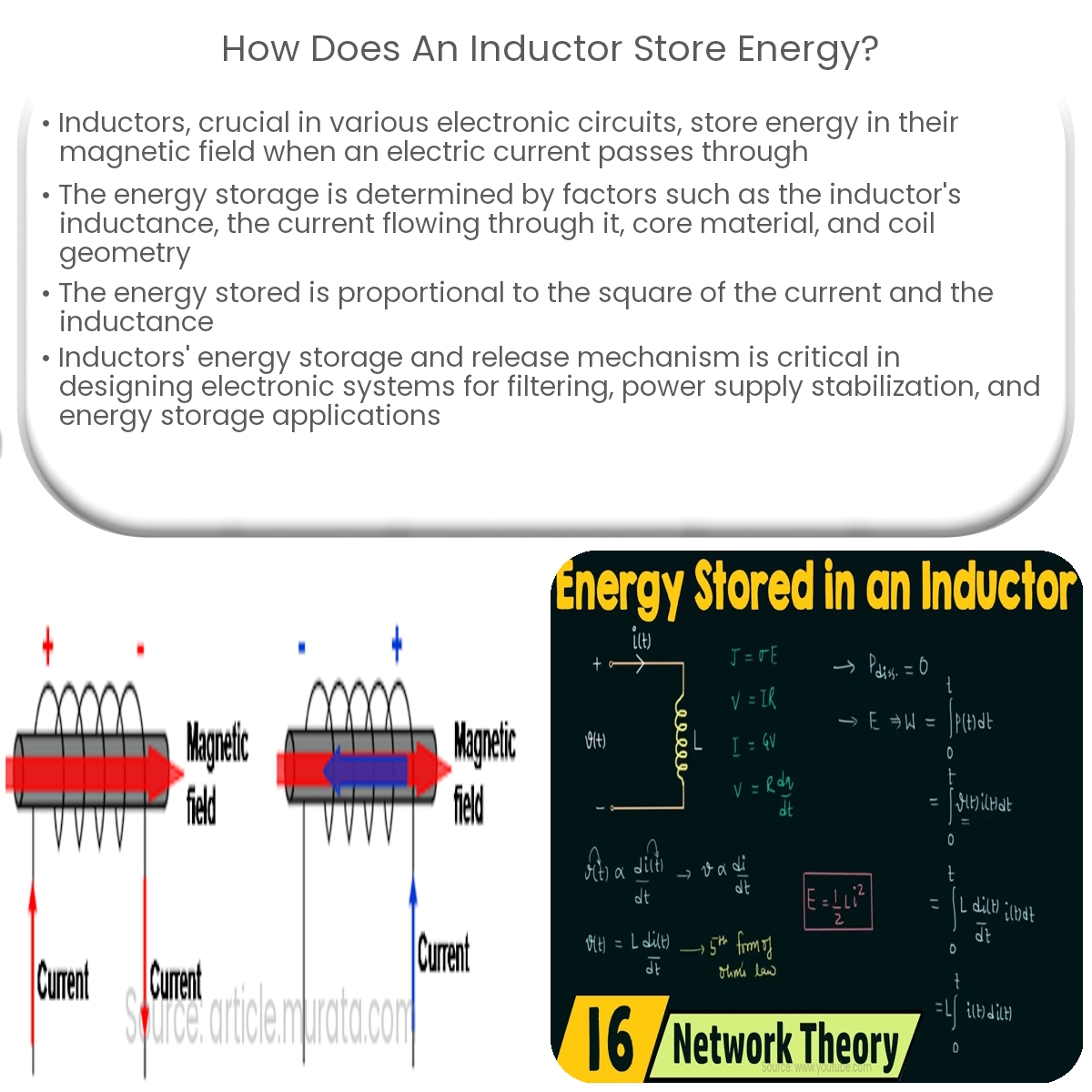Inductors store energy in their magnetic field when current flows through them. This energy storage depends on the inductor’s inductance and current.
Energy Storage in Inductors
An inductor is a passive electronic component that plays a crucial role in various electronic circuits by storing energy in its magnetic field when an electric current flows through it. This article will discuss how inductors store energy and the factors that influence this process.
Inductor Construction and Operation
Inductors are commonly made by winding a conducting wire, such as copper, around a core material with high magnetic permeability like iron, ferrite, or air. The inductor’s primary property is its inductance (L), measured in henrys (H), which depends on the coil’s geometry, the number of turns, and the core material.
When a current (I) flows through the inductor, it generates a magnetic field around the coil. The energy stored in the magnetic field (W) is given by:
W = (1/2)LI2
Where L is the inductance and I is the current flowing through the inductor.
Energy Storage Process
As the current flows through the inductor, the magnetic field builds up and stores energy. The energy stored in the inductor is proportional to the square of the current and the inductor’s inductance. When the current decreases or stops, the magnetic field collapses, and the stored energy is released back into the circuit. This phenomenon is known as self-induction, where a changing magnetic field induces a voltage across the inductor that opposes the change in current.
Factors Affecting Energy Storage
Several factors influence the energy storage capabilities of an inductor:
- Inductance (L): A higher inductance value results in more energy being stored in the inductor’s magnetic field for a given current.
- Current (I): The energy stored in the magnetic field is proportional to the square of the current flowing through the inductor.
- Core material: The core material impacts the inductor’s inductance and energy storage capability. Air-core inductors typically have lower inductance values and store less energy, while iron-core or ferrite-core inductors have higher inductance values and store more energy.
- Coil geometry: The shape and size of the coil, along with the number of turns, can affect the inductance and energy storage capabilities of an inductor.
Conclusion
Inductors store energy in their magnetic field when an electric current flows through them. The energy storage process is influenced by the inductor’s inductance, current, core material, and coil geometry. Understanding how inductors store and release energy is vital for designing electronic circuits and systems that utilize inductors for filtering, power supply stabilization, and energy storage applications.


